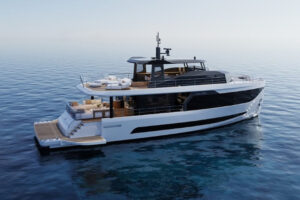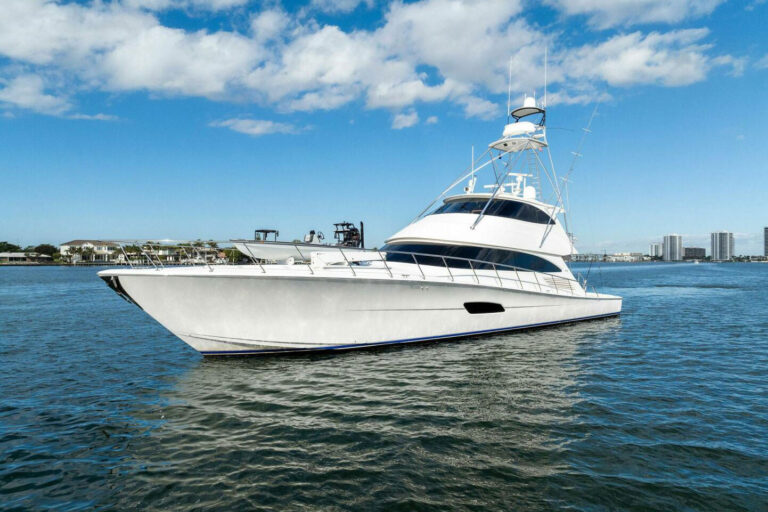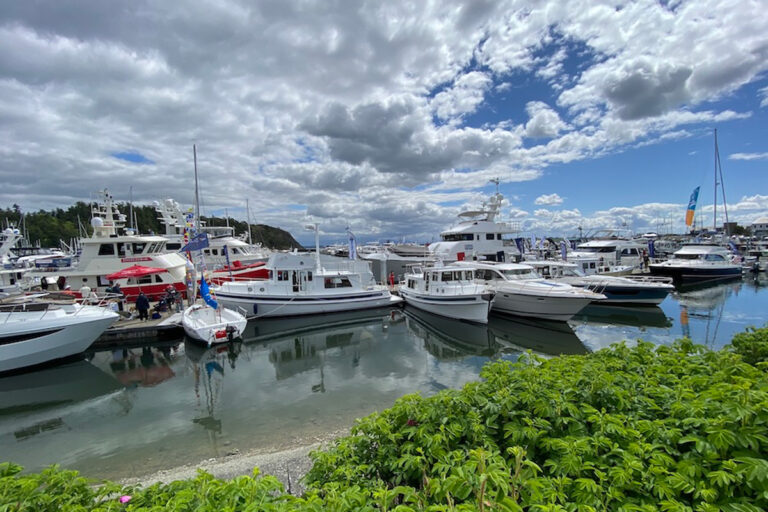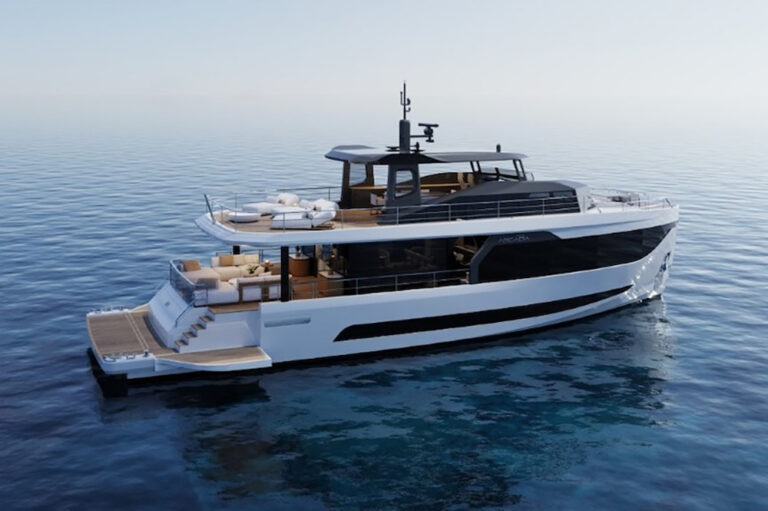
Yachting Developments in New Zealand is working toward a 2017 delivery for this 127-foot Michael Peters design, expected to set a world record the minute she splashes. Both the shipyard and the designer are confident she will be the biggest sport-fish yacht ever built entirely of carbon. She’s also going to be the biggest Peters design ever constructed, anywhere.
“We’re taking the building of a carbon structure to a new level in the sport-fishing field,” says Ian Cook, managing director at Yachting Developments.
Yachting Developments specializes in carbon-fiber construction, which it has used extensively on sailing yachts built to race and cruise. The same proprietary technology is being used on this sport-fish, which is for an owner who previously commissioned Peters to design the 86-foot sport-fish yacht Lanakai II.
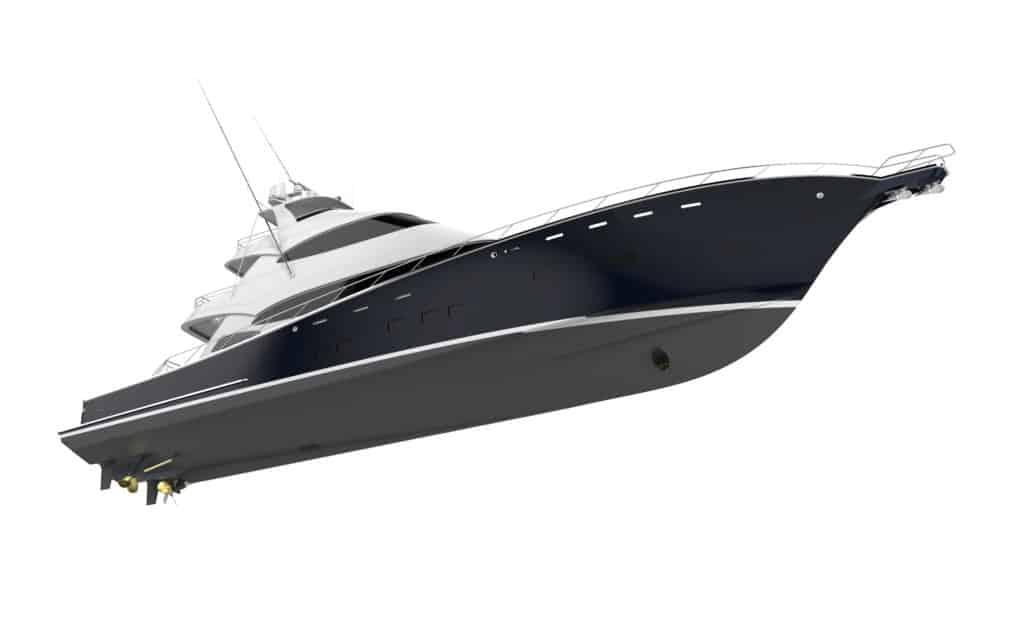
The owner began the new project with designer Douglas Sharp, then asked Peters to come aboard because of their longtime relationship from the earlier build.
“The guy’s previous boat was well-used,” Peters says. “He is a true offshore sportsman. That boat went on many long-range trips with deep-sea fishing and diving. He’s a guy who knows what he wants in his boat.”
That includes twin 3,140 hp MTU engines, which Peters says are “the size of a room on a 127-foot boat.” They will produce a 27- or 28-knot top end with a 22- to 24-knot cruise speed.

More important, Peters says, is that the power plants will have the muscle to push all the weight from features the owner keeps adding. “He wants a fast boat, he wants long range and he wants everything he can think of — and I mean anything you can put on the boat, he’s going to put on the boat,” Peters says. “As he builds the boat, everything he’s choosing, the weight begins to pile on. So we’re happy he went with the bigger engines because they can power all of that.”
Cook says weight savings is also a key reason to choose all-carbon construction. It leaves more pounds available for the owner to pack on elsewhere.
“This is a trend that we’ve seen in all boats,” Peters says. “I don’t care if it’s 40 feet or 400 feet. A lot of things are no longer options. People with 40-foot boats want a gyrostabilizer now. They add a tremendous amount of weight. When you use lightweight construction, you’re really adding room for these kinds of things.”


